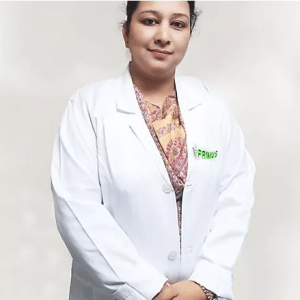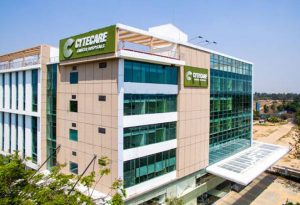Adenocarcinoma of the Sigmoid Colon
Adenocarcinoma of the sigmoid colon is a type of cancer that originates in the large intestine. It usually begins in the colon, which is the end of the digestive tract. Colon cancer can affect any individual of any age, but it is usually seen among older adults. The cancer starts as benign clumps of cells inside the mucosa of the colon (the innermost layer), these clumps of cells are referred to as polyps. Read More
Top Doctors For Adenocarcinoma of the Sigmoid Colon Treatments
Top Hospitals For Adenocarcinoma of the Sigmoid Colon Treatments
Adenocarcinoma of the Sigmoid Colon
Table of contents
- Overview
- What is the cause of colon cancer?
- What are the symptoms of colon cancer?
- What are some of the risk factors of colon cancer?
- How is Adenocarcinoma of the Sigmoid Colon Diagnosed?
- Stages of Colon Cancer
- What is the treatment of adenocarcinoma of the sigmoid colon?
- How can colon cancer be prevented?
- What is the prognosis of individuals with adenocarcinoma of the sigmoid colon?
Overview
Adenocarcinoma of the sigmoid colon is a type of cancer that originates in the large intestine. It usually begins in the colon, which is the end of the digestive tract.
Colon cancer can affect any individual of any age, but it is usually seen among older adults. The cancer starts as benign clumps of cells inside the mucosa of the colon (the innermost layer), these clumps of cells are referred to as polyps. Over time some of these polyps then become cancerous and finally develop into colon cancers. They can take up to ten years for a polyp to form a cancer. Some tests can detect these polyps before they become cancers which healthcare providers can do.
Undetected colon cancers may spread from the colon, working their way from the inner layer, through layers of tissue to the outer layer of the colon, before then spreading to other parts of the body. This is referred to as metastasis.

What is the cause of colon cancer?
The cause of colon cancer remains unknown. However, it is known that normal cells are regulated in growth, division, and death. When these cells begin to grow and divide in an unregulated manner and do not die when they should, it shows the development of a cancerous growth. This cancerous growth occurs as a result of changes in the DNA of the cells. These changes affect the oncogenes and the tumor suppressor genes, which are necessary for the regulation of the growth, division, and death of the cells, causing multiple gene changes which then result in colon cancer. Polyps also increase the risk of an individual developing cancer, especially a type of noncancerous polyp called an adenomatous polyp. These cancerous cells can migrate to other parts of the body through the blood and lymphatic system, which makes the condition a lot harder to treat.
What are the symptoms of colon cancer?
An individual may have colon cancer without having any of the symptoms. Also, some symptoms of colon cancer are very similar to other less serious diseases. However, the symptoms generally seen in cases of colon cancer include:
- Pain in the abdomen
- Bloating
- Unexplained weight loss
- Vomiting and nausea
- Blood in stool
- Persistent change in bowel movement, including constipation or diarrhea
- A feeling of incomplete emptying of the bowel
- Tiredness or fatigue
What are some of the risk factors of colon cancer?
Some of the factors that may increase the risk of an individual having colon cancer include:
- Inherited syndromes – some mutations that are inherited in the family may increase an individual’s risk of colon cancer. One of the most common inherited syndromes that can increase the risk of the disease is familial adenomatous polyposis and Lynch syndrome.
- Family history of colon cancer – an individual is more likely to develop colon cancer if they have a relative that has had the disease. The risk increases if the relatives are more than one
- Inactivity – individuals who are inactive are most likely going to develop colon cancer.
- Diabetes – individuals with diabetes or insulin resistance also have an increased risk of developing colon cancer
- Smoking – smoking increases the general risk of cancers.
- Alcoholism – heavy alcohol use increases the risk of colon cancer development.
- Older age – the rate of an individual developing colon cancer increases with age.
- Colorectal polyps – individuals with polyps in their colon have a high chance of the polyps turning cancerous.
- Low fiber diet – a diet low in fiber and high in fats has been associated with an increased risk of colon cancer development
- Radiation therapy – radiation therapy used to treat previous cancer would increase the risk of colon cancer, especially if the radiation were directed at the stomach.
How is Adenocarcinoma of the Sigmoid Colon Diagnosed?
It is recommended for healthy individuals to go for colon cancer screening, even with no apparent signs or symptoms, in order to check for signs of colon cancer or signs of colon polyps. Discovering colon cancer at its early stages provides the greatest chance of treating the disease. It is generally recommended that individuals with an increased risk of colon cancer development begin screening at the age of 45-50. Individuals with some signs of colon cancer would be recommended to undergo one or a combination of these tests; they include:
- Colonoscopy – this is where a long and flexible tube attached to a video camera and monitor is used to view the entire colon and rectum. This can also enable the doctor to take samples of any region that looks suspicious for analysis and also remove polyps.

- Blood tests – the blood can be tested for some chemicals which are sometimes produced by colon cancers, which may also help in determining the prognosis of the patient or even if the individual is responding to treatment. Blood tests can also give information about the general health of the individual.
Stages of Colon Cancer

Staging is done in cancer cases in order to indicate the level of metastasis of the cancer and the size of any tumors present, and staging also helps to determine the treatment plan to be used. Staging tests can include imaging procedures like CT scans. The stage of cancer might not be fully understood until an operation to remove colon cancer. The stages of colon cancer range from 0-4.
- Stage 0 – at this point, the cancer is still in very early stages; it hasn’t gone past the inner layer of the colon. It is often known as carcinoma in situ. In this stage, it is usually not difficult to treat.
- Stage 1 – the cancerous growth has progressed into the next tissue layer of the colon
- Stage 2 – the cancer has progressed through the inner layer to the outer layer of the colon but has not spread beyond the colon
- Stage 3 – cancer has gone past the colon and has spread to the lymph nodes; it has not spread to farther areas in the body.
- Stage 4 – the cancer has traveled to distant parts of the body and is still spreading.
What is the treatment of adenocarcinoma of the sigmoid colon?
The treatment plan taken will generally depend on the location, the stage, and the general health of the individual. The treatment also usually involves surgery to remove the cancer. Other additional therapies, like radiation, chemotherapy, etc., may also be recommended. The main aim of the therapy is to remove the cancer, prevent its spread and reduce the symptoms. The treatment for cancer may include:
Surgery
This is the main treatment, especially for the early stages of colon cancer. If the cancer is still a polyp, just a polypectomy may be adequate to remove the cancerous polyp. If the cancer is affecting a part of the colon, the surgery to remove that part is called a colectomy. Some surrounding tissue is also removed in the procedure. Lymph nodes may also be removed to reduce the risk of the spread of the cancer. After colectomy, the healthy parts of the colon are reattached, or a stoma (a surgical opening in the abdominal wall through which waste passes out of the body into a bag) is created. A stoma eliminates the need for the lower part of the colon. Endoscopy, laparoscopic surgery, and palliative surgery are other types of surgical procedures that may be done for this disease.
Chemotherapy
This is where medication that kills cancer cells is administered to the patient. They achieve this by disrupting DNA or proteins vital to the cancer cells. Healthy cells are also affected but are able to recover from any chemotherapy-induced damage, while the cancer cells do not. Side effects of chemotherapy are hair loss, nausea, vomiting, and fatigue. Chemotherapy may be administered in combination with other therapies, or different types of chemotherapy can be administered together.
Radiation therapy
This is where high-energy beams are focused on the cancer cells with the aim of killing them. It may be done using external or internal radiation therapy. Radiation therapy may be administered alone or in combination with other therapies like chemotherapy. Radiation therapy can be administered early in the treatment or in the later stages, depending on the presentation of the colon cancer. Some side effects that may be seen in radiation therapy are nausea, vomiting, diarrhea, fatigue, skin changes, anorexia, and loss of weight. These side effects usually subside after radiation therapy.
How can colon cancer be prevented?
There is no sure way of preventing adenocarcinoma of the sigmoid colon. However, there are some measures that can reduce the risk of the disease, and they include:
- Regular exercise
- Limiting fat intake and eating more fiber-rich food
- Maintain a healthy weight
- Taking a lot of fruits, vegetables, and grains.
- Stopping smoking and excess alcohol intake
What is the prognosis of individuals with adenocarcinoma of the sigmoid colon?
More than 90% of Individuals who are treated in the early stages of colon cancer have a very successful treatment and are alive five years after the treatment. The survivability rates decrease with the later stages of the disease. Self-care is also a very important part of living with colon cancer.
































































































